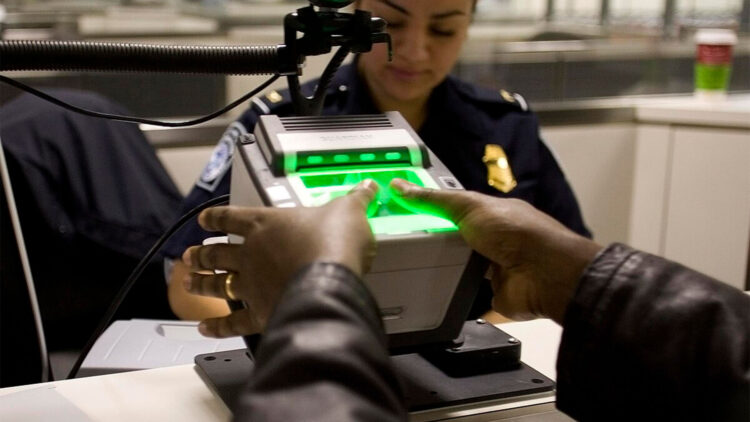Since December 26, the way in which non-U.S. citizens enter and exit the United States there will have a noticeable change. Every foreign visitor will be photographed both on arrival and on departure, according to a new rule from the Department of Homeland Security (DHS). Additional biometric information, like fingerprints and facial features, are usually collected by border guards. All non-citizens, including children and seniors, are included in the new regulation, from tourists to temporary employees.
The policy is an important part of the bigger DHS strategy to develop an “integrated biometric entry and exit system.” The plan is to compare the data gathered during a person’s arrival and departure from the nation. The official rule states that “Implementing an integrated biometric entry and exit system that compares data collected upon arrival with data obtained upon departure will help address national security concerns.”
DHS believe that using biometrics at both locations will help monitor who is actually entering and leaving, reduce the number of visa overstays, and identify those who are using false identities.
What will actually happen at the border?
Until now, most of biometric data collection took place at the point of entering the United States. The departure procedure will be tied to the same kind of control under the new regulation. This represents, according to many experts, a fundamental shift in both Mexico’s and the United States’ border surveillance practices.
Facial recognition cameras will automatically take pictures of foreign visitors as they pass through airports, seaports, and land borders. Depending on the kind of check being conducted, officials may occasionally also gather fingerprints or other biometric identifiers. All non-citizens, including those with work permits, tourist visas, or temporary residency, will be facing this rule.
According to the government, this will help:
-
Confirm a traveler’s identity.
-
Verify that individuals depart within the time frame specified by their visa.
-
Identify documents that are fake or identity theft.
According to DHS, which has already tested facial recognition in international airports, over 300 million travelers have passed through these systems. Thousands of people with fraudulent identification or irregular status have been found as a result.
Privacy concerns and a “new surveillance paradigm”
According to Austin, Texas-based Lincoln-Goldfinch Law, the new regulation, “symbolizes a fundamental change in border policy and biometric surveillance.” Immigration lawyer and civil rights advocate Kate Lincoln-Goldfinch warns: “When biometric data is collected both upon entry and exit, we are entering a new paradigm of surveillance that requires active legal oversight.”
She contends that families have to be aware of what happens to their data, including how long it will be kept, who can access it, and how mistakes can be fixed in the event that someone is wrongly identified. Additionally, she demands that DHS ensure transparency, constitutional protections, and minimal interference with lawful travel, arguing that the government “cannot treat all non-citizens equally without evaluating each case.”
Supporters of privacy are concerned that large databases of biometric data may be hacked or misused, and that facial recognition may make more mistakes with specific ethnic groups. On the other hand, proponents of the system claim that biometrics can match procedures already in use in some regions of Europe, Asia, and Latin America, speed up airport lines, and increase identification accuracy.
Security vs. digital freedom
A more effective and safe migration system is the primary goal. However, civil rights organizations warn that the United States might be entering a new era of widespread digital surveillance.
As this system grows, the conflict between privacy and safety will probably intensify, and how the government finds that balance will determine how millions of people travel in the years to come.
